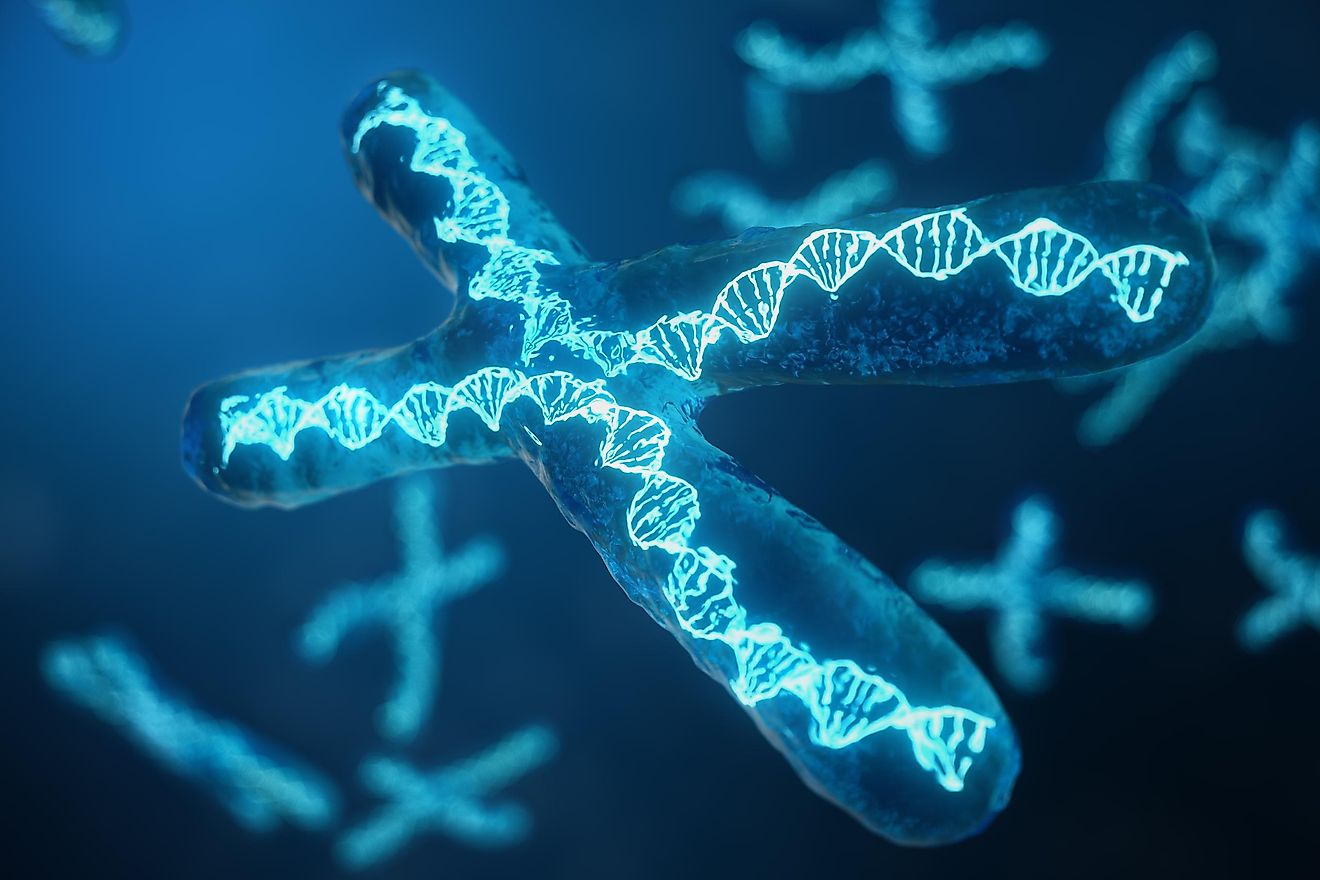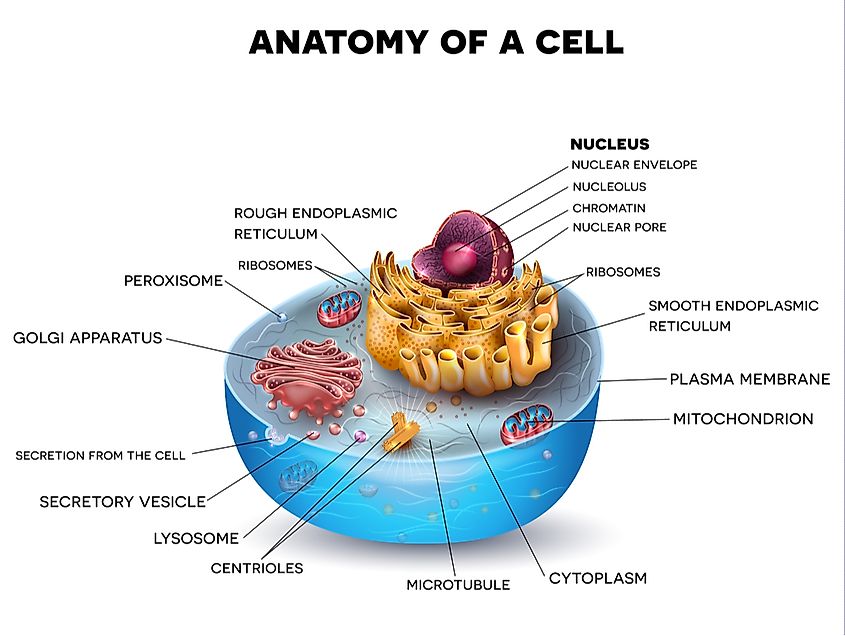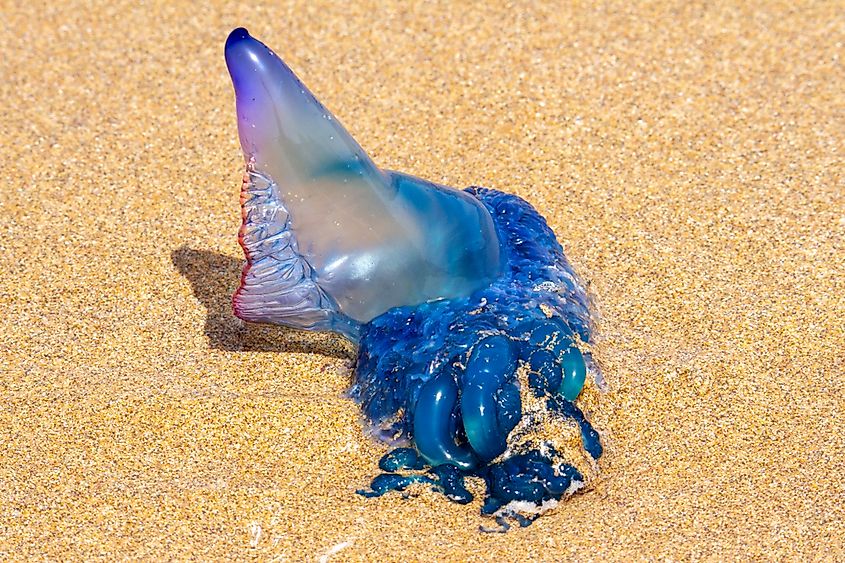
However, some cells and organisms have, what is called, biological immortality: they are not susceptible to apoptosis, intracellular mechanisms that cause cell death. It means that if no external force causes them damage, they can continue their existence because there are no internal forces to bring them to their end.
How Does Human Cell Aging Work?
Why exactly are normal human cells innately mortal – why our bodies age? First of all, are structures at the end of the chromosomes called the “telomeres.” In humans, chromosomes irreversibly lose some part of their telomeres every time a human cell divides. Essentially, it starts from the moment our cells differentiate from the form of the stem cells and keeps happening as we grow and age. Cells keep losing telomers until they reach the point where cells can no longer divide: in scientific terms, enter synesthesia.

Sometimes, cells also lose the ability to divide due to irreparable “mistakes” (mutations) that happen during replication. There are many more mechanisms leading to synesthesia or apoptosis. In any case, the endpoint is called Hayflick limit: the number of times a human cell population will divide before cell division can no longer occur due to DNA damage or lack of telomeres.
Bad News For Irish Wolfhounds
An illustrative example of the aging caused by the telomere loss is the difference in longevity between giant and regular size dogs, for instance, Irish Wolfhounds and primitive breeds like Huskies. It is known that giant breeds have a significantly shorter lifespan. Scientists attribute it to the exaggerated rate of cell division (and, accordingly, loss of their telomeres) during their extremely accelerated spurt of growth during their first several months of life. Puppies are born small. In giant breeds, they have the same number of months to grow to a much larger size. If we simplify, they “spend” too many telomers during the first year of life to reach the giant size.
Cancer Cells And The Induced Immortality
Scientists attribute “biological immortality” to cells that are not subject to the Hayflick limit and can replicate themselves an unlimited number of times. To put it simply, biologically immortal organisms can still die. It happens because of external factors, but they are not susceptible to the same internal mechanisms that causes aging in biologically mortal cells.
In a twist of the plot, while normal human cells all have the Hayflick limit, the cells that were first identified as “immortal” were cancer cells. They have expressed the telomere-lengthening enzyme telomerase. Two most commonly used immortalized cancer cell lines are used in cancer and various other types of research. The HeLa cells originated from a sample of cervical cancer taken from Henrietta Lacks in 1951. The Jurkat line was founded in the 1970s using the cells of a 14-year-old boy with T cell leukemia. Immortality in cell lines can be induced artificially.
Immortal Organisms Grow But Do Not Grow Old
We have discovered a few organisms that appear to possess various factors to prevent their cells from death due to apoptosis. Organisms that possess that ability still can be killed by a predator, a disease, can be eaten, become a victim of violence or accident, or succumb to a change in the environment. Age stops being the increased risk factor – they might grow, but not grow old.
An Immortal Jellyfish?
One species of jellyfish, Turritopsis nutricula, has a unique mechanism that prevents its aging. This simple organism is capable of undergoing “cellular transdifferentiation,” a process where the cells revert to a different type of cell in a manner beneficial to the organism. This jellyfish essentially returns to its previous development stage, its “younger self” polyp form. It can undergo this process indefinitely with no identified damaging effects to its cells. If our cells could revert to the stage with unspent telomerase, they would essentially become young again.
Turritopsis die for various external reasons: eaten and digested, for example, or destroyed in its polyp form. Still, as this is the most prominent currently known case of transdifferentiating used that way and to such benefit of the organism. The tiny creature remains an object of intensive studies.
Lobsters: Impressive, But Not Immortal
What initially attracted the attention to lobsters and created the “immortal lobster” hype, was their ability to keep growing even after reaching maturity. We already mentioned the telomerase enzyme in regards to cancer cells that can keep dividing without limit. Most vertebrate animals can produce telomerase only in their early developmental stages. It appears that lobsters have a constant supply of it throughout their life.
However, the problem they encountered on their path to immortality (apart from humans’ culinary fancy) is their protective exoskeleton. While other cells divide and the animal grows, its rigid exoskeleton does not. Lobsters have to get rid of it as it becomes too tight, and this process in itself is taxing. So all lobsters reach the point when they no longer can withstand the effort of molting and die of exhaustion.
Cnidarians: Colonies Of Clones
Cnidarians present us another “immortality” form, posing a question whether a genetic copy which continues living can be considered the same organism or not. Cnidarians are corals, zoanthids, sea fans, siphonophores, and other organisms that form colonies by budding. Lots of them, essentially, start with just one individual embryo and create colonies by repeatedly cloning themselves, making copies of the basic unit or zooid – all with the same genetic set. Many anemones and coral reefs do so. Now an intriguing part: if a branch of a coral of broken off, it can start its own colony in a different place. Even if the “first” coral dies, the separated part continues to live on, carrying the same genetic set – virtually, maintaining the life of the initial individual.

Siphonophores take it one step further as they can make several different kinds of basic units in the same colony. All units are genetically identical, and all come from one founding individual. The main difference is that in corals, all colony units are functionally and physically identical. In the siphonophores, there is a fundamental differentiation of units, each specializing in a particular task. Some zooids are adapted for swimming, some for feeding, reproduction, hunting, etc. Moreover, as they are suited for that one task, so they would not survive on their own. However, it appears siphonophores can keep budding and replacing their units without limit, hence maintaining the “immortality” of the genetic individual.


 Users Today : 13
Users Today : 13 Total views : 469063
Total views : 469063